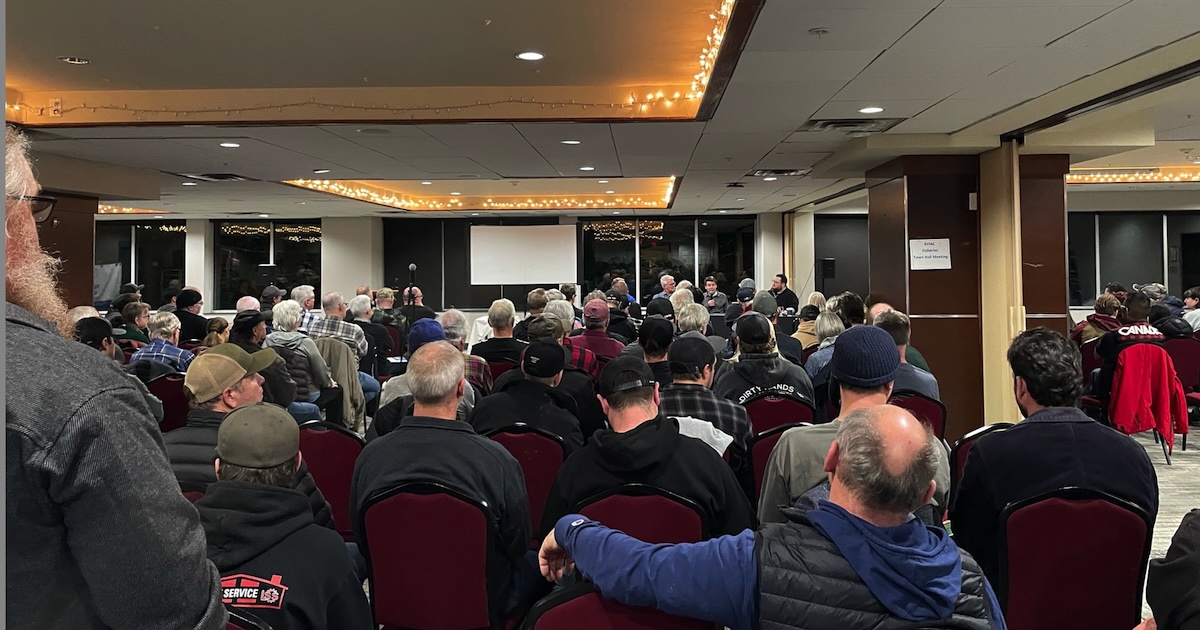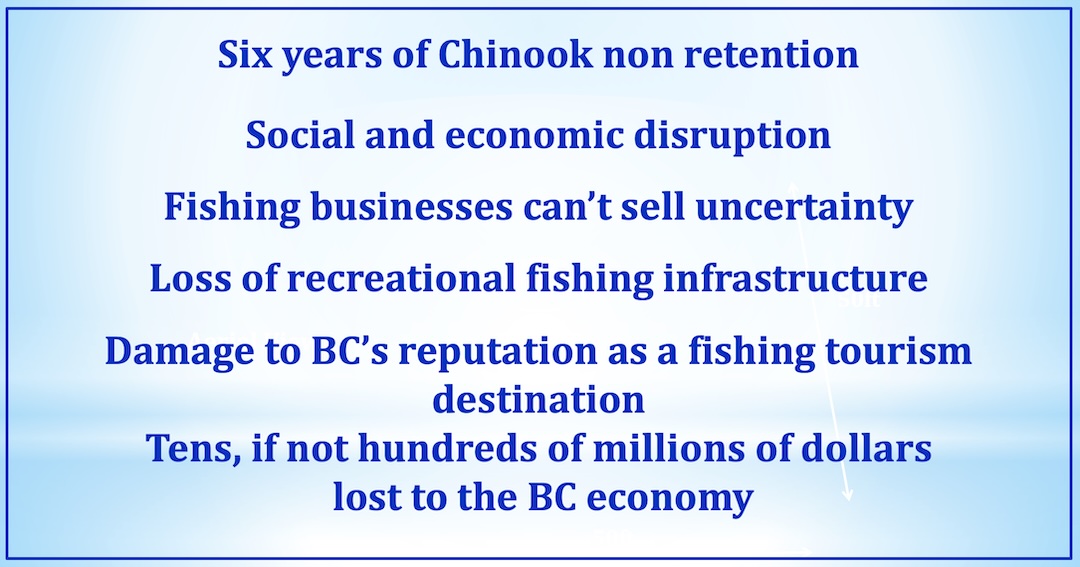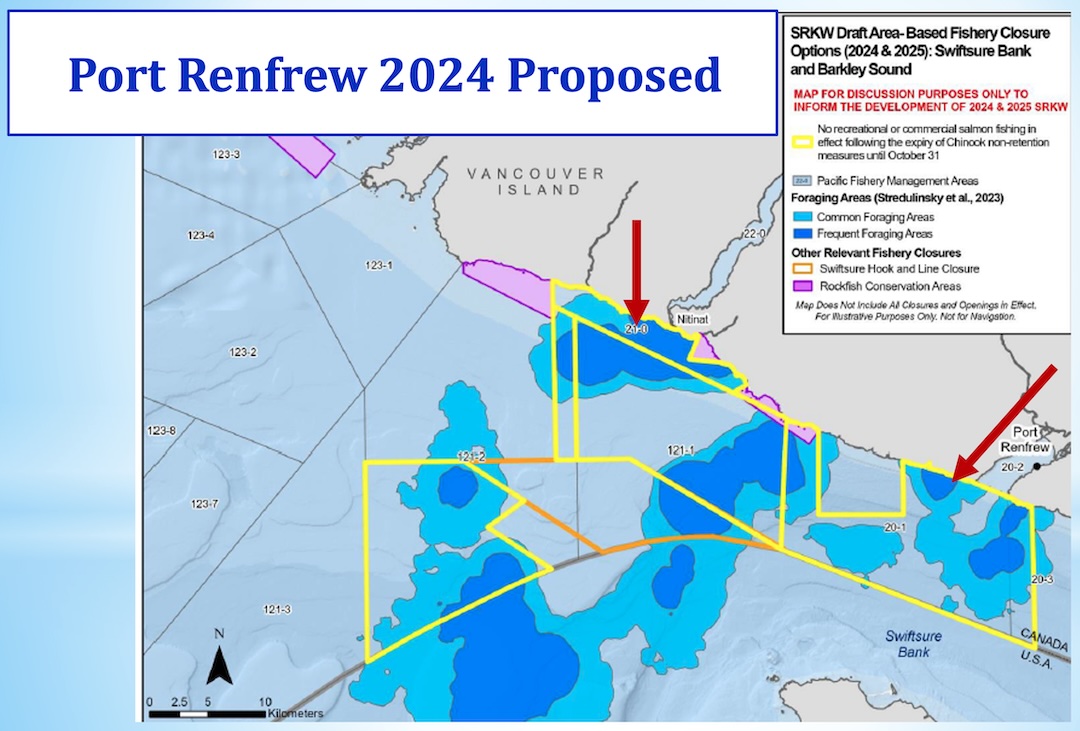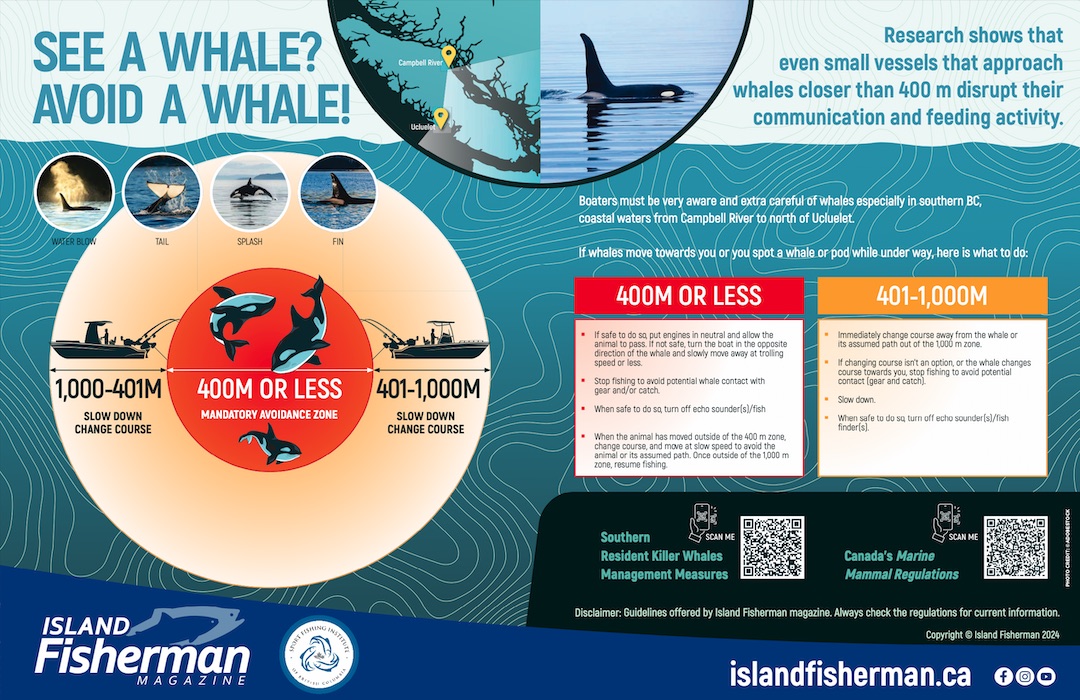
On February 27, 2024, over 300 anglers, angling industry stakeholders and others attended a town hall meeting in Langford to discuss their concerns and frustrations with salmon fishing regulations, and closures that are economically and culturally impacting local communities known for their world class salmon fisheries.
The meeting was led by the South Vancouver Island Anglers Coalition (SVIAC), which is a non-profit advocacy group founded in 2012, “Dedicated exclusively to ensure there will be abundant fish, a healthy productive habitat, and thriving public fisheries in our region for generations to come.” As the SVIAC states on their website, “The public are often led to believe that anglers are simply uncaring users of the marine and freshwater resources and are, at times, blamed by radical environment groups for the decline of certain fish stocks. This could not be further from the truth. Few people know that anglers are extremely generous and contribute, with their own money, millions of dollars each year.” For example, the Sooke Chinook Sea Pen Project, also supported by local first nations, to date has released “4.5 million healthy little Chinook smolts into the sea” as Chris Bos said during the meeting. Background details of the project are here: SVIAC: Anglers That Support Southern Resident Killer Whales. The event was sponsored by the Public Fishery Alliance, the Fraser River Sport Fishing Alliance, and the BC Recreational Fishing Association.
The focus of the discussion revolved around the regions severely impacted by regulations resulting from measures to protect Upper Fraser River Chinook and the Southern Resident Killer Whales (SRKW). The unnecessary impact of these regulations on tourism and on local economies has been disastrous. A PFA summary of the issues stated, “In the hardest hit areas Chinook non-retention, followed by SRKW regulations can last from April 1 to October 31, 2024 will be the 6th year in a row for these measures, effectively cutting the economic and social life blood out of smaller coastal communities that heavily depend on sustainable angling access.”

Presentation Slide
Dave Brown of the PFA remarked, “Where there is abundance and opportunities, we are being told we can’t have access. Non-government and environmental organizations are targeting sport fishing, we have a bullseye on our head.”

L to R (Chris Bos, Wayne Friesen, Dave Brown, Chris Tuker)
Port Renfrew is currently experiencing a massive blow. DFO has mapped, and re-mapped, no-salmon-fishing whale sanctuary zones, while the consensus of those who have fished there for decades is that the whales are rarely there. “The safer close to shore waters, where recreational fishing takes place, is not where the whales forage”, according to 55-year veteran Port Renfrew angler and meeting panelist Wayne Freisen. “They feed in the deeper offshore water. Literally I can remember 3 times I’ve seen whales forage, and they were offshore, not along shore.” Whales are transient animals that follow equally transient food, so while a sanctuary model itself doesn’t make sense, anglers who spend a lot of time on these waters that are hardest hit, say the whales are rarely in these areas.
Wayne continues, “The DFO has also created a double standard with respect to the static closures where every other boater on the water, including whale watchers, follow a 400-meter avoidance zone. The U.S. follows the same simple avoidance rule all over their waters with no static zones. We see a lot of U.S. boaters here, and when they look at our map, they must shake their head. It must also be very difficult for the fisheries to enforce it. The DFO also states that there is a prey availability issue. So why would the DFO say no to an increase in output from the Nitinat Hatchery, which was supported by the Ditidaht First Nation? They were going to increase their output from 3 million to 5 million and the DFO said no. They say there’s not enough salmon in the area, but they actually don’t support an increase in the hatchery output.”
Chris Tucker, President of the Port Renfrew Chamber of Commerce, brought up the letter he recently wrote to DFO Minister, the Honourable Diane Lebouthillier, which showed the economic impact of the decisions is a conservative $26,070,000 over the annual 165-day summer season, and doesn’t account for the enduring loss of businesses and job opportunities. “These proposed regulations directly jeopardize the livelihoods of over 100 small business owners in the area, potentially forcing them to close permanently. The long-term economic repercussions of these short-sighted regulations are estimated to extend into the hundreds of millions for this region.”

Presentation Slide
Chris Bos, President of the South Vancouver Island Association and a founding member, said, “The take home from this, is there are valid opportunities to fish. There are places where fisheries can be opened, where there is no risk to wild stocks of concern. There are places where the mark rate is so high that allowing you to keep a hatchery fish, even though there’s a small number of wild stocks of concern going through, will have virtually zero impact on them. Why can’t we fish during those times? As for whales, if people who fished there for 30 years aren’t seeing them, the [DFO’s] data is drastically wrong. We don’t buy it because we haven’t seen the killer whales there. We need to go to avoidance only, married to what the Americans are doing.”
 Whale Avoidance Chart for Boaters in Canada—Click to Download PDF
Whale Avoidance Chart for Boaters in Canada—Click to Download PDF
“Avoidance” means stopping fishing and slowly moving the required distance away from killer whales. When the whales stop feeding and leave the area anglers can return and begin fishing again. It an easy-to-understand strategy that can be applied anywhere on the BC coast, and already exists except in these hard-hit areas with static long term salmon fishing closures. Island Fisherman magazine recently posted a downloadable PDF with an Avoidance bubble. Anglers are flexible. If DFO believes the avoidance distance needs to be expanded, then angler organizations invite DFO to discuss options that produce a positive outcome for SRKW’s while sustaining modest salmon angling opportunities.
Visit the Store
$34.99
$34.99
Featured Catch

Joel Unickow halibut (Photo: Rob Frawley Lucky Strike Sportfishing Tofino)







